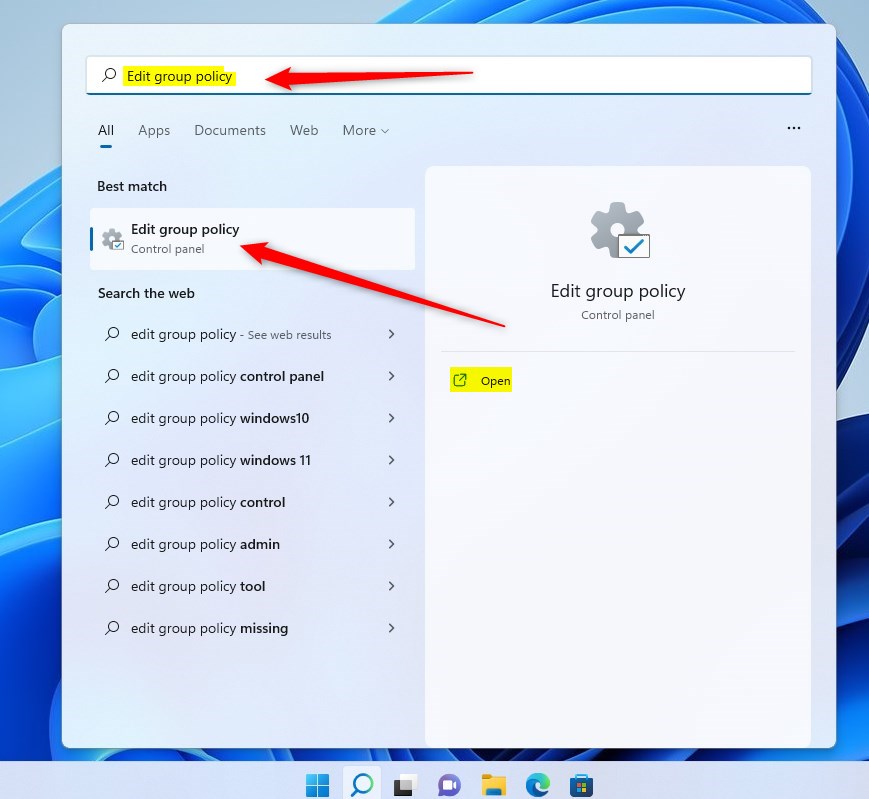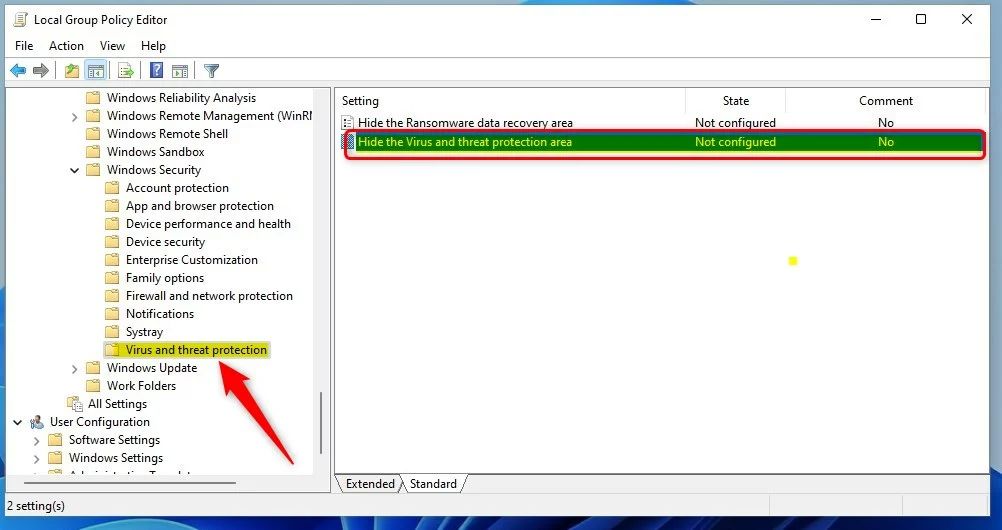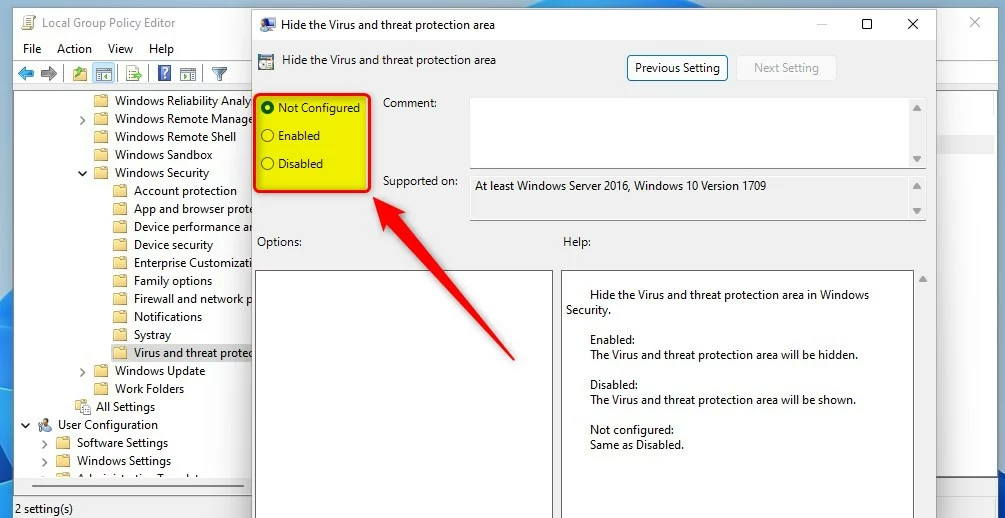This article describes steps to hide or show the Windows Security app Virus & Threat Protection section in Windows 11.
The Windows Security app is a built-in application that comes with Windows 11. It provides a centralized dashboard to see what’s happening with your device’s security and health and take any necessary actions.
The app has many sections that allow you to quickly see the status of your virus and threat protection, firewall and network security, device security controls, and more.
This section provides information and settings for antivirus protection from Microsoft Defender Antivirus and third-party AV products.
If you have configured your device’s security settings to suit your environment and don’t want others to change or mess with these settings, you can hide these sections from users.
On the other hand, if these sections are hidden and you want to show them again, you can use the guide below.
How to display or hide virus and threat protection section with Windows Security app in Windows 11
As described above, the Virus and threat protection section provides information and settings for antivirus protection from Microsoft Defender Antivirus and third-party AV products.
Below is how to hide or show the Virus & Threat protection section in Windows Security app in Windows 11.
First, open Local Group Policy Editor by clicking the Start Menu and searching for Edit group policy, as highlighted below.
Under Best match, select Edit group policy to launch Local Group Policy Editor.

In the left pane of Local Group Policy Editor, expand the tree:
Computer Configuration > Administrative Templates > Windows Components > Windows Security > Virus and threat protection
In the Virus and threat protection details pane on the right, locate and double-click the setting that says “Hide the Virus and threat protection area.”

On the Hide the Virus and threat protection area window set the option to Not Configure, Enabled, or Disabled.
- Not Configured (default)
- Enabled – The Virus and threat protection area will be hidden.
- Disabled – The Virus and threat protection area will be shown.

Display or hide the Virus & threat protection section in Windows Security via Windows Registry
If you can’t open the Local Group Policy Editor, you can use the Windows Registry instead.
Open the Windows Registry, and navigate to the folder key path as listed below.
HKEY_LOCAL_MACHINE\SOFTWARE\Policies\Microsoft\Windows Defender Security Center\Virus and threat protection
If you don’t see the Windows Defender Security Center -> Virus and threat protection folder key, right-click on the Windows key, then create both key folders.

On the right pane of the Virus and threat protection folder key, right-click and select New -> DWORD (32-bit) Value. Next, type a new key named UILockdown.
Double-click the new key and enter the Value data as 0 to show the Virus and threat protection section in Windows Security app.
A Value data of 1 will hide the Windows Security app’s Virus and threat protection section.

Restart your computer, and the Virus and threat protection section will be hidden or displayed.

That should do it!
Reference:
Conclusion:
- In this article, we walked through the steps to show or hide the Virus and threat protection section in the Windows Security app in Windows 11.
- Whether you want to prevent others from tampering with security settings or make these sections visible again, the instructions provided via Local Group Policy Editor and Windows Registry offer a comprehensive solution.
- Following the outlined methods empowers users to customize the visibility of critical security features based on individual needs and preferences.
- For further assistance or to contribute to this topic, feel free to engage through the comment section.

Leave a Reply to How to Hide or Show Account Protection in Windows 11 – Geek Rewind Cancel reply